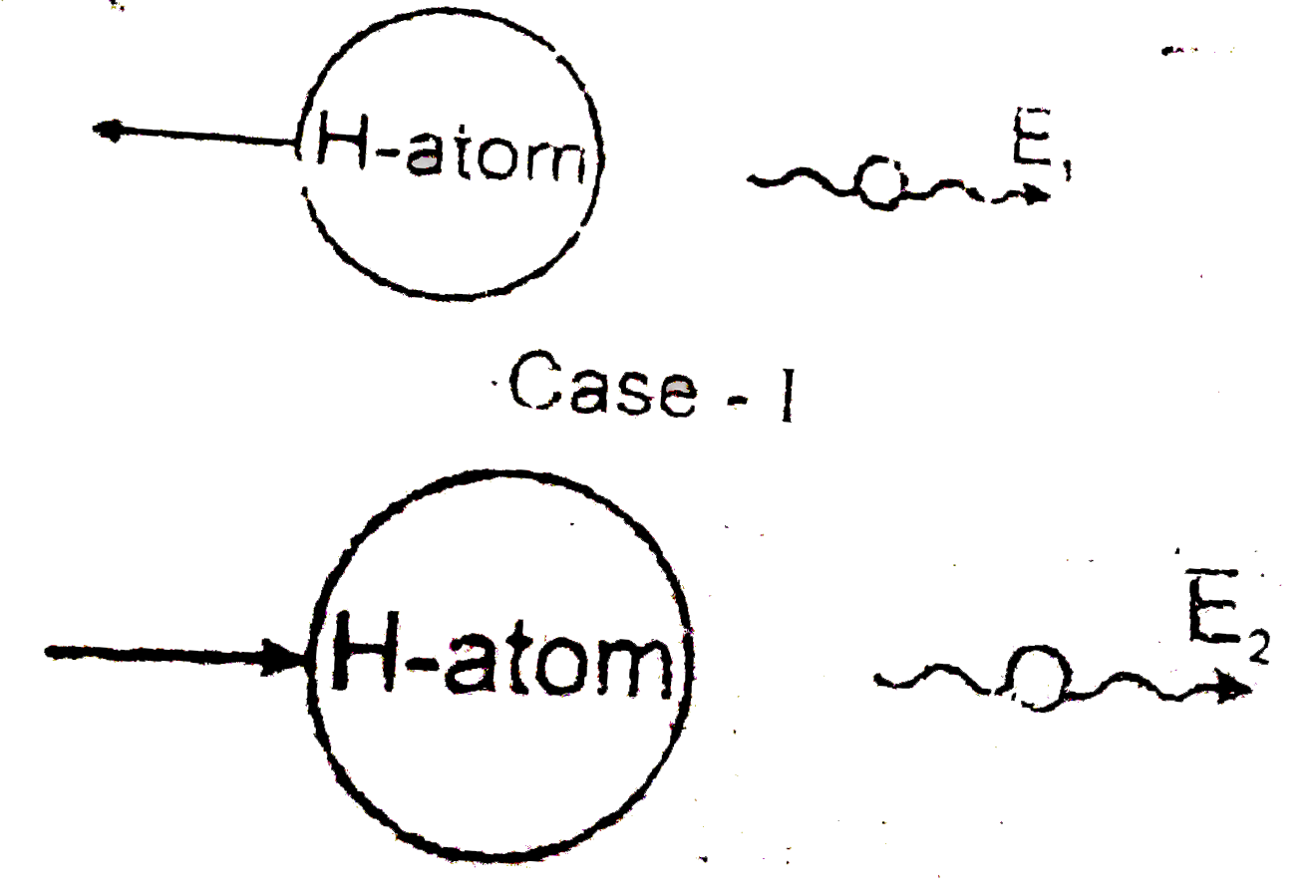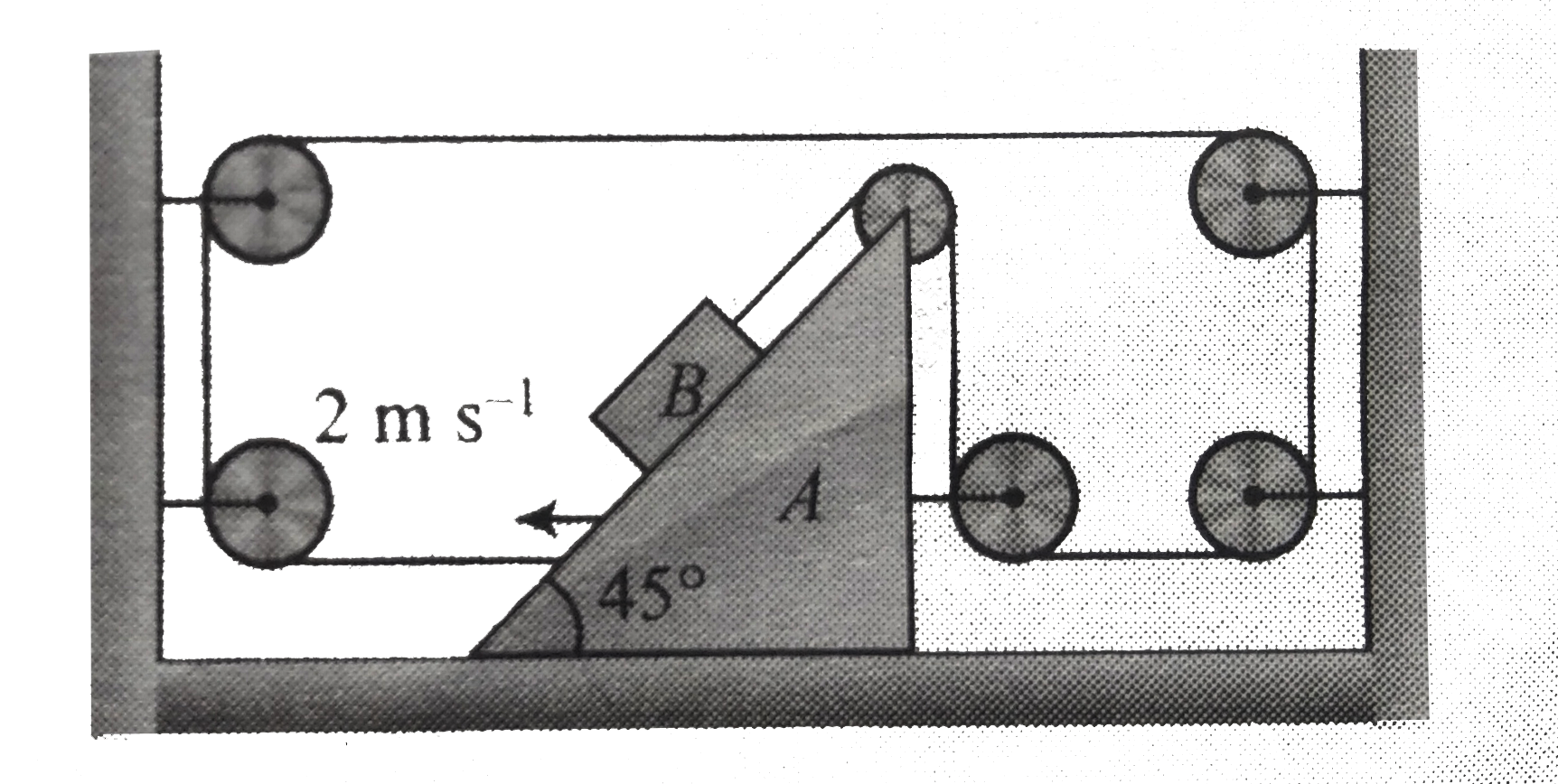Two hydrogen atoms are in excited state with electrons residing in n=2. First one is moving towards left and emits a photon of energy E1 towards right. Second one is moving twoards left with same speed and emits a photon of energy E2 towards left. Taking recoil of nucleus into account during emission process
E1>E2
E1<E2
E1=E2
information insufficient
The correct Answer is:B

In the first case K.E of H-atom increase due to recoil whereas in the second case K.E decreases due to recoil
∴E2>E1.
Topper's Solved these Questions
- BOOK - RESONANCECHAPTER - DAILY PRACTICE PROBLEMEXERCISE - DPP No.349videos
DAILY PRACTICE PROBLEM
- BOOK - RESONANCECHAPTER - DAILY PRACTICE PROBLEMEXERCISE - DPP No.3520videos
DAILY PRACTICE PROBLEM
- BOOK - RESONANCECHAPTER - DAILY PRACTICE PROBLEMEXERCISE - DPP No.329videos
DAILY PRACTICE PROBLEM
- BOOK - RESONANCECHAPTER - CURRENT ELECTRICITYEXERCISE - High Level Problems (HIP)21videos
CURRENT ELECTRICITY
- BOOK - RESONANCECHAPTER - ELECTRO MAGNETIC WAVESEXERCISE - Exercise 327videos
ELECTRO MAGNETIC WAVES
Similar Questions
Two hydrogen atoms are in excited state with electrons inn=2 state.First one is moving to wards left and emits a photon.' of energy E1 towards right. Second one is moving towards right with same speed and emits a photon of energy E2 towards right. Taking recoil of nucleus.into account during_emission process :
View SolutionSystem is shown in fig. and wedge is moving toward left with speed 2ms−1. Find the velocity of the block B.
 View Solution
View Solution
Knowledge Check
- Question 1 - Select One
A stationary hydrogen atom emits photon corresponding to the first line of Lyman series. If R is the Rydberg constant and M is the mass of the atom, then the velocity acquired by the atom is
A[√3E2m+C2]−cB[√3E4m+C2]−cC3E4mcDEmc - Question 2 - Select One
A stationary hydrogen atom in the first excited state emits a photon. If the mass of the hydrogen atom is m and its ionization energy is E, then the recoil velocity acquired by the atom is [speed of light = c]
A[√3E2m+c2]−cB[√3E4m+c2]−cC3E4mcDEmc - Question 3 - Select One
How far is A from the starting point? If
1. a moves 5 km towards East, then 2 km towards left, 10 km towards right and finally , 2km towards right and stops .
II. a moves 2 km towards East , then 2 km towards right 13 km towards left and finally 2km towards left and stopsAa. Statement I alone is
sufficient to answer.Bb. Statement II alone is
sufficient to answer.Cc. Statement I or Statement II alone
is sufficient to answer.Dd. both Statement I and II together
are necessary to answer.
In a sample of excited hydrogen atoms electrons make transition from n=2 to n=1. Emitted energy.
View SolutionA ball of mass m moving with speed v towards the right strikes a wall moving towards the left with speed u. Find the change in the K.E. of the ball if the collision is elastic.
View SolutionThe wavelength of the photon emitted by a hydrogen atom when an electron makes a transition from n = 2 to n = 1 state is :
View SolutionA hydrogen like species with atomic number Z is present in a higher excited state (n) . This electron can make transition to the first excited level by successively emitting two photons of energy 2.64 eV and 48.36 eV . This electron can also make transition to third excited state by emitting three photons of energy 2.64 eV , 2. 66 eV and 4.9 eV .
Identify the hydrogen like species involved .View SolutionGround state energy of H-atom is (−E1),t he velocity of photoelectrons emitted when photon of energy E2 strikes stationary Li2+ ion in ground state will be:
View Solution

